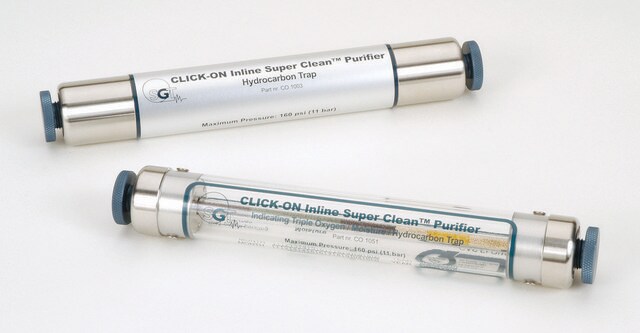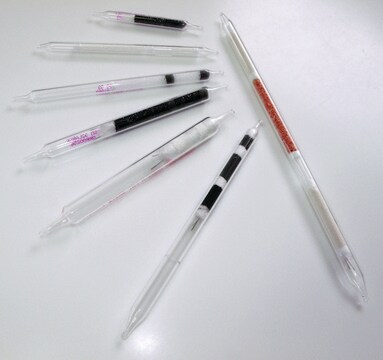おすすめの製品
product name
Carbosieve S-III, matrix Carbosieve S-III, 60-80 mesh, bottle of 10 g
製品種目
Carbosieve
形状
powder, crystals or granules
包装
bottle of 10 g
パラメーター
400 °C max. temp.
テクニック
LPLC: suitable
gas chromatography (GC): suitable
solid phase extraction (SPE): suitable
表面積
~975 m2/g
マトリックス
Carbosieve S-III
マトリックス活性基
carbon
粒径
60-80 mesh
ポアサイズ
~0.04 cm3/g mesoporosity
~0.35 cm3/g microporosity
~0 cm3/g macroporosity
~4-11 pore diameter
密度
~0.66 g/mL (free fall density)
分離法
reversed phase
詳細
- 球状(顆粒状粒子よりも優れた充填層性能)
- 硬質で砕けにくい(しっかりと充填でき、破壊されない)
- 高多孔性(高表面積)
- C2-C5 n-アルカン程度のサイズの分析物分子に使用
- 疎水性(高湿度環境下で使用可能)
一般に、CMS吸着剤は、球状グラファイトポリマーカーボン(SGPC)およびグラファイトカーボンブラック(GCB)吸着剤と比較して、相対吸着強度が高くなります。当社のCarbosieve製品は、CMS吸着剤の一種です。
- 非テーパー状の微細孔を有します
- 微細孔のみを含むため、非常に強い吸着強度を有します
- ほとんどの吸着剤で保持に問題がある小分子揮発性検体の多くに優れた性能を示します
弊社の炭素吸着剤に関するさらに詳しい情報につきましては、sigma-aldrich.com/carbonをご確認ください。
法的情報
保管分類コード
13 - Non Combustible Solids
WGK
WGK 3
引火点(°F)
Not applicable
引火点(℃)
Not applicable
個人用保護具 (PPE)
Eyeshields, Gloves, type P3 (EN 143) respirator cartridges
適用法令
試験研究用途を考慮した関連法令を主に挙げております。化学物質以外については、一部の情報のみ提供しています。 製品を安全かつ合法的に使用することは、使用者の義務です。最新情報により修正される場合があります。WEBの反映には時間を要することがあるため、適宜SDSをご参照ください。
Jan Code
10184:
10184-BULK:
10184-VAR:
この製品を見ている人はこちらもチェック
資料
Carbon Molecular sieves (CMS) are a versatile range of adsorbents that can be tailored for specific applications. Supelco® scientists have been synthesizing synthetic CMS carbons for several decades, starting from tailoring of the starting polymers/copolymers, to modifying the final properties of the subsequent CMS carbon.
ライフサイエンス、有機合成、材料科学、クロマトグラフィー、分析など、あらゆる分野の研究に経験のあるメンバーがおります。.
製品に関するお問い合わせはこちら(テクニカルサービス)










